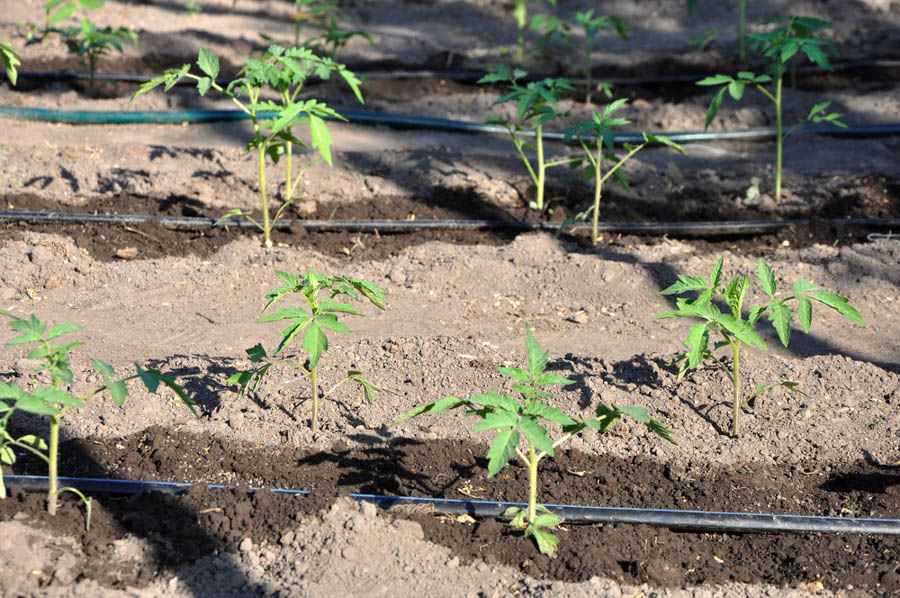Down and Dirty 16: Remove Chlorine When Watering Organic Gardens (Chlorinated Water, Part 2 of 3)

GardenZeus receives commissions for purchases made through links in this post. There is no additional cost to you.
Down and Dirty Southern California Gardening
A weekly GardenZeus article series to help gardeners succeed in Southern California’s unique climates and growing conditions.
Post 16: Remove Chlorine When Watering Organic Gardens (Chlorinated Water, Part 2 of 3)
Is it worth the effort to remove chlorine from municipal water when watering your garden?
If you’re gardening in dead soil using chemical fertilizers, chlorine at the levels that are typical in municipal water won’t make much difference to your plant health and yield. See Down and Dirty 15: Chlorine, Soil, and Watering Gardens for an introduction to this topic.
The concern for organic gardening with chlorinated water is the degree of harm that chlorine causes to soil microbes and living soil systems, which in turn support plants far more effectively than anything humans might do or provide to plants directly. If you are gardening organically, I recommend you remove chlorine as much as possible from irrigation water.
Humic acids rapidly bind or neutralize both chlorine and chloramines. The first step in combating chlorine in municipal water is to create conditions for a humate-rich garden or landscape. Humic acids are naturally produced by decomposing mulch and soil organic matter, such as from compost worked into the soil and the root hairs that are constantly grown and shed within the soil by living plants. Moderate-to-high levels of soil organic matter and mulch thick enough to maintain a moist, decomposing layer above the soil may be your best defenses against chlorine and chloramines in municipal water.
Chlorine naturally offgasses from standing water in about 24 to 48 hours. For a small garden or group of potted plants it’s reasonable to leave water sitting in buckets, plastic trash cans, or similar large containers for a day or two before use. I have found this method to be helpful over years for hand watering using a watering can, and it can be efficient when containers are large enough for a watering can to be partly submerged and filled quickly, which I find to be much faster and easier than filling from a hose. Keep the containers near the areas that need to be watered. With enough large containers and a hose running at the right flow, you can be refilling containers for tomorrow or the next day as you water plants by hand from containers that were filled a day or two ago. Without larger tanks and and a more-elaborate delivery system than most gardeners will want to construct, this method is awkward for watering anything but a small garden, and water must be used up or emptied within a few days to avoid creating a breeding ground for mosquitoes.
Another option is to add humic acids to water. This option will be covered in more detail in a future Down and Dirty article.
For larger gardens and landscape areas, hose filters provide a reasonable solution for removing most chlorine. Hose filters are relatively easy to install. They may restrict water flow, and/or filtering performance may be reduced at high water flow. GardenZeus recommends this basic and inexpensive filter, or this better-quality chlorine filter that accommodates a higher flow volume with infrequent or annual filter replacement. Larger entire-landscape or household filters are also available that require installation by a professional.
In part 3 of this series I will discuss chloramines, humic acids, and garden soil.
“Down and Dirty Southern California Gardening” is a weekly GardenZeus article series in which expert Darren Butler shares more than 20 years of experience about what works and what doesn’t with gardening in Southern California:
Post 15: Chlorine, Soil, and Watering Gardens (Chlorinated Water, Part 1 of 2)
Post 17 : Tips For Managing Fallow Garden Beds and Containers
All articles in this series: Down and Dirty Southern California Gardening
Enter your California zip code for customized advice by plant
It is easy to get started with a new vegetable garden using a raised bed planter: